Pro Member
- Joined
- Sep 6, 2022
- Posts
- 505
- Solutions
- 2
- Likes Received
- 1,820
- Points
- 93
- Name
- Chris Summers
I have a vast collection of slides and negatives, lots of my stuff from my film days but also my dad's collection and my grandfather's as well. During the pandemic when I was spending a lot more time at home I decided to start digitizing all of this stuff. I found an old Bessler enlarger someone was giving away and I got it and removed the lamp housing/negaive carrier section and mounted a tripod head and my Canon R fitted with a 100mm macro lens and an extension tube. It makes a really good copy stand that can easily move the camera up or down as needed. I use an old slide sorting light box as my light source and found online some carriers designed for holding cut film strips and one for mounted slides. My grandfather's negatives taken in China were harder to digitize as they were really odd size film from old cameras he owned. Grandpa went to China to work in the Chinese Postal Service in 1902, it was run by the British. He was there until 1932 when he went back to England as Japan was advancing into Manchuria. My grandfather was a pretty good amatuer photographer who loved "street photography" of everyday things. I think he mainly used Kodak film cameras and due to his employment was often transferred to different parts of China. He took pictures all over China, even near Tibet.
Overall the process is pretty straight forward. I use the camera's auto exposure and then do a 2 shot bracket of 1/2 down and 1/2 stop up to try to ensure I get a good exposure. I use Lightroom and a plugin called Negative Lab Pro that helps convert the negative to a good quality positive image. Sometimes I go into Photoshop for additional editing. The last shot was colorized using one of the Neural Filters in Photoshop.
I do own some older Epson film scanners but find using my Canon R to be faster and better quality.
Overall the process is pretty straight forward. I use the camera's auto exposure and then do a 2 shot bracket of 1/2 down and 1/2 stop up to try to ensure I get a good exposure. I use Lightroom and a plugin called Negative Lab Pro that helps convert the negative to a good quality positive image. Sometimes I go into Photoshop for additional editing. The last shot was colorized using one of the Neural Filters in Photoshop.
I do own some older Epson film scanners but find using my Canon R to be faster and better quality.
Attachments
-
 China postal worker-Edit-1.jpg570.7 KB · Views: 157
China postal worker-Edit-1.jpg570.7 KB · Views: 157 -
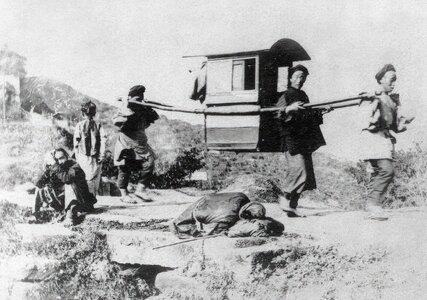 China road scene-gigapixel-standard-scale-2_00x.jpg1 MB · Views: 157
China road scene-gigapixel-standard-scale-2_00x.jpg1 MB · Views: 157 -
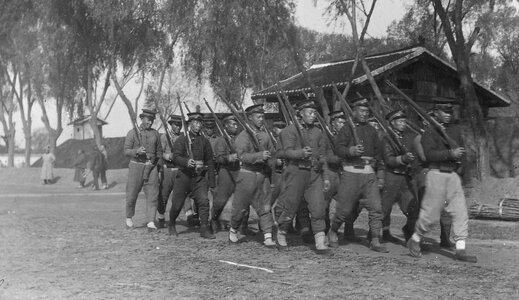 Chinese soldiers.jpg184.1 KB · Views: 146
Chinese soldiers.jpg184.1 KB · Views: 146 -
 gorge on Yangtze river 6.jpg153 KB · Views: 138
gorge on Yangtze river 6.jpg153 KB · Views: 138 -
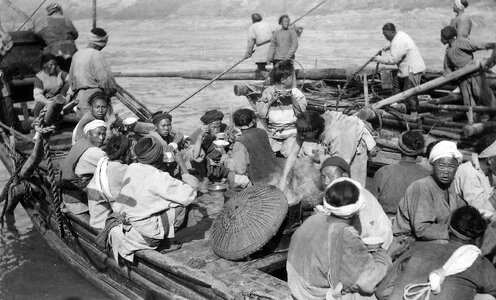 Junk on Yangtze river 002.jpg482.7 KB · Views: 158
Junk on Yangtze river 002.jpg482.7 KB · Views: 158 -
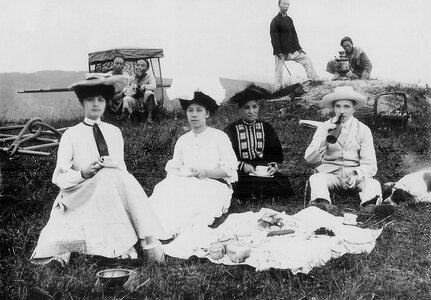 Shaw Picnic 1.jpg319.6 KB · Views: 153
Shaw Picnic 1.jpg319.6 KB · Views: 153 -
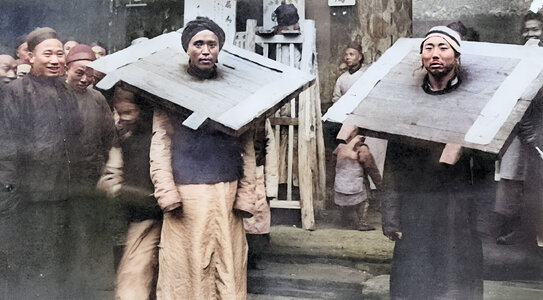 Cangue.jpg469.2 KB · Views: 157
Cangue.jpg469.2 KB · Views: 157
Last edited:
